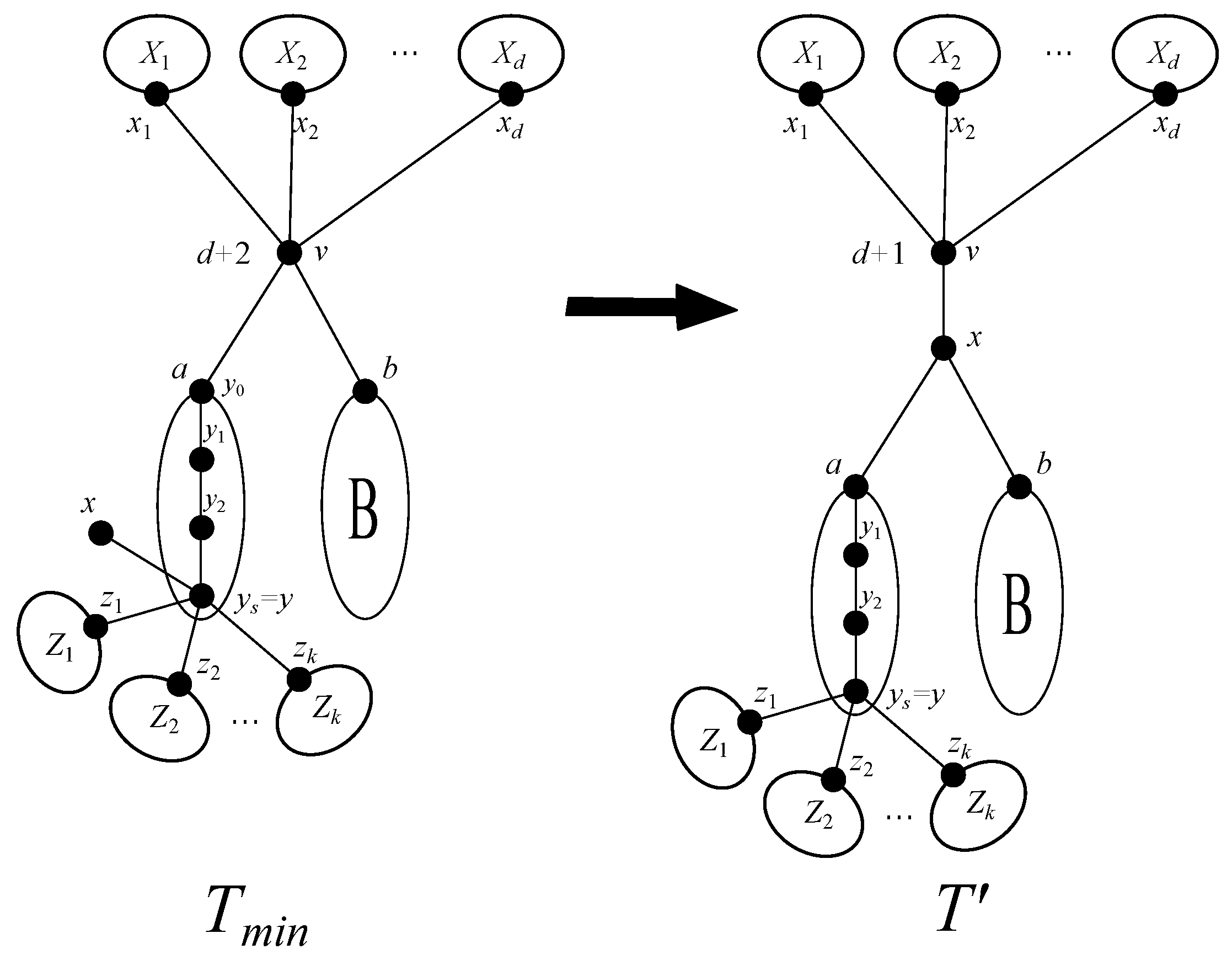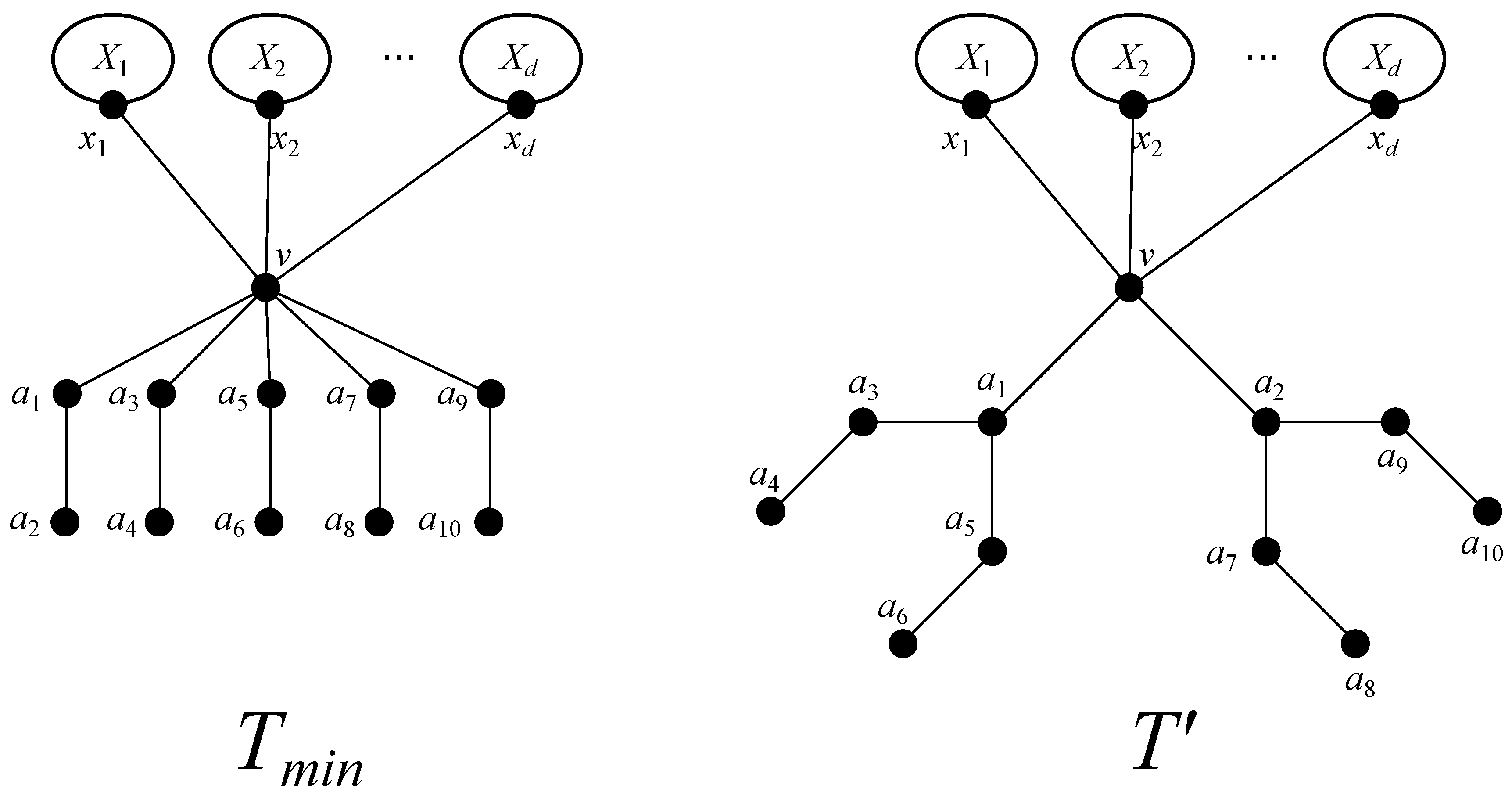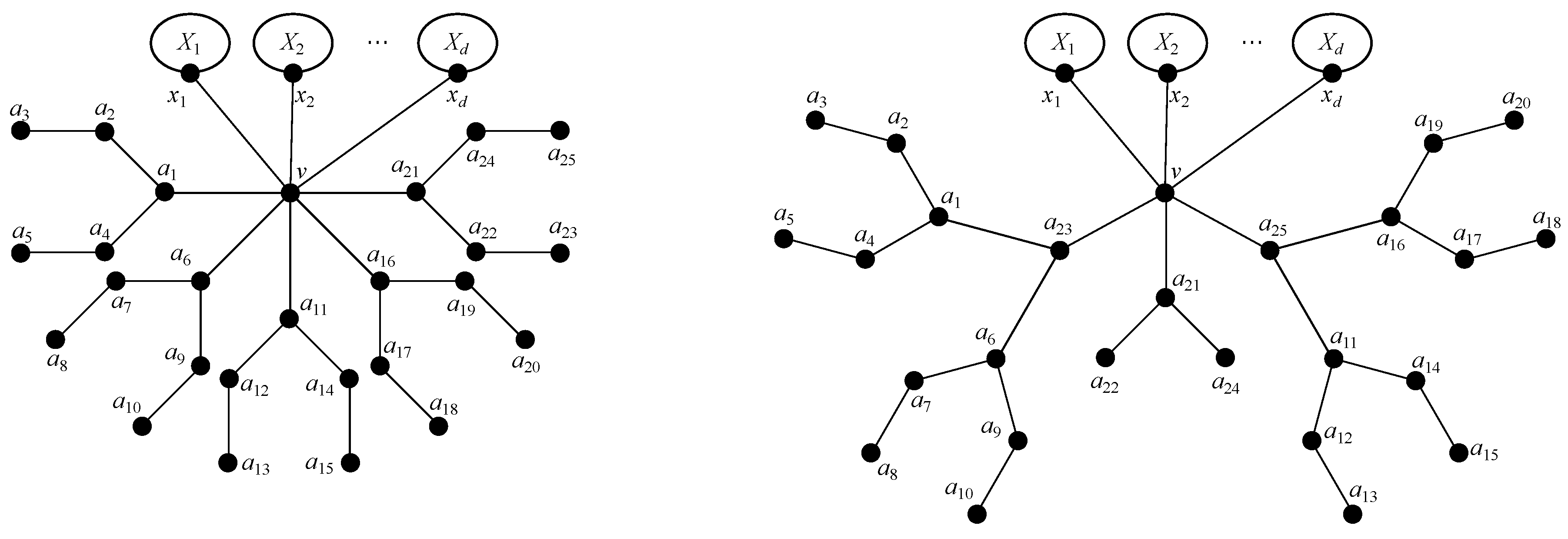Trees with Minimum Weighted Szeged Index Are of a Large Diameter
Abstract
:1. Introduction
2. About the Diameter of Trees with Minimum Weighted Szeged Index
3. Two Properties of Trees Having Minimum Weighted Szeged Index
4. Conclusions
Author Contributions
Funding
Conflicts of Interest
References
- Todeschini, R.; Consonni, V. Molecular Descriptors for Chemoinformatics; Wiley–VCH: Weinheim, Germany, 2009. [Google Scholar]
- Ali, A.; Zhong, L.; Gutman, I. Harmonic index and its generalizations: extremal results and bounds. MATCH Commun. Math. Comput. Chem. 2019, 81, 249–311. [Google Scholar]
- Behtoei, A. Some relations and bounds for the general first Zagreb index. MATCH Commun. Math. Comput. Chem. 2019, 81, 361–370. [Google Scholar]
- Eliasi, M. On extremal properties of general graph entropies. MATCH Commun. Math. Comput. Chem. 2018, 79, 645–657. [Google Scholar]
- Liu, J.; Zheng, R.; Chen, J.; Liu, B. The extremal general atom–bond connectivity indices of unicyclic and bicyclic graphs. MATCH Commun. Math. Comput. Chem. 2019, 81, 345–360. [Google Scholar]
- Milovanović, I.Z.; Milovanović, E.I.; Matejić, M. Some inequalities for general sum–connectivity index. MATCH Commun. Math. Comput. Chem. 2018, 79, 477–489. [Google Scholar]
- Zheng, R.; Liu, J.; Chen, J.; Liu, B. Bounds on the general atom–bond connectivity indices. MATCH Commun. Math. Comput. Chem. 2020, 83, 143–166. [Google Scholar]
- Wiener, H. Structural determination of paraffin boiling points. J. Am. Chem. Soc. 1947, 69, 17–20. [Google Scholar] [CrossRef] [PubMed]
- Gutman, I. A formula for the Wiener number of trees and its extension to graphs containing cycles. Graph. Theory Notes N. Y. 1994, 27, 9–15. [Google Scholar]
- Chiniforooshan, E.; Wu, B. Maximum values of Szeged index and edge–Szeged index of graphs. El. Notes Discr. Math. 2009, 34, 405–409. [Google Scholar] [CrossRef]
- Dobrynin, A.A. Graphs having the maximal value of the Szeged index. Croat. Chem. Acta 1997, 70, 819–825. [Google Scholar]
- Dobrynin, A.A. The Szeged and Wiener indices of line graphs. MATCH Commun. Math. Comput. Chem. 2018, 79, 743–756. [Google Scholar]
- Ji, S.; Hong, Y.; Liu, M.; Wang, J. The lower bound of revised Szeged index with respect to tricyclic graphs. MATCH Commun. Math. Comput. Chem. 2018, 79, 757–778. [Google Scholar]
- Li, X.; Zhang, M. A note on the computation of revised (edge-)Szeged index in terms of canonical isometric embedding. MATCH Commun. Math. Comput. Chem. 2019, 81, 149–162. [Google Scholar]
- Tratnik, N. The edge–Szeged index and the PI index of benzenoid systems in linear time. MATCH Commun. Math. Comput. Chem. 2017, 77, 393–406. [Google Scholar]
- Ilić, A.; Milosavljević, N. The weighted vertex PI index. Math. Comput. Modell. 2013, 57, 623–631. [Google Scholar] [CrossRef]
- Nagarajan, S.; Pattabiraman, K.; Chandrasekharan, M. Weighted Szeged index of generalized hierarchical product of graphs. Gen. Math. Notes 2014, 23, 85–95. [Google Scholar]
- Pattabiraman, K.; Kandan, P. Weighted Szeged indices of some graph operations. Trans. Comb. 2016, 5, 25–35. [Google Scholar]
- Pattabiraman, K.; Kandan, P. Weighted Szeged index of graphs. Bull. Int. Math. Virtual Inst. 2018, 8, 11–19. [Google Scholar]
- Bok, J.; Furtula, B.; Jedličková, N.; Škrekovski, R. On extremal graphs of weighted Szeged index. MATCH Commun. Math. Comput. Chem. 2019, 82, 93–109. [Google Scholar]




© 2020 by the authors. Licensee MDPI, Basel, Switzerland. This article is an open access article distributed under the terms and conditions of the Creative Commons Attribution (CC BY) license (http://creativecommons.org/licenses/by/4.0/).
Share and Cite
Atanasov, R.; Furtula, B.; Škrekovski, R. Trees with Minimum Weighted Szeged Index Are of a Large Diameter. Symmetry 2020, 12, 793. https://doi.org/10.3390/sym12050793
Atanasov R, Furtula B, Škrekovski R. Trees with Minimum Weighted Szeged Index Are of a Large Diameter. Symmetry. 2020; 12(5):793. https://doi.org/10.3390/sym12050793
Chicago/Turabian StyleAtanasov, Risto, Boris Furtula, and Riste Škrekovski. 2020. "Trees with Minimum Weighted Szeged Index Are of a Large Diameter" Symmetry 12, no. 5: 793. https://doi.org/10.3390/sym12050793
APA StyleAtanasov, R., Furtula, B., & Škrekovski, R. (2020). Trees with Minimum Weighted Szeged Index Are of a Large Diameter. Symmetry, 12(5), 793. https://doi.org/10.3390/sym12050793





